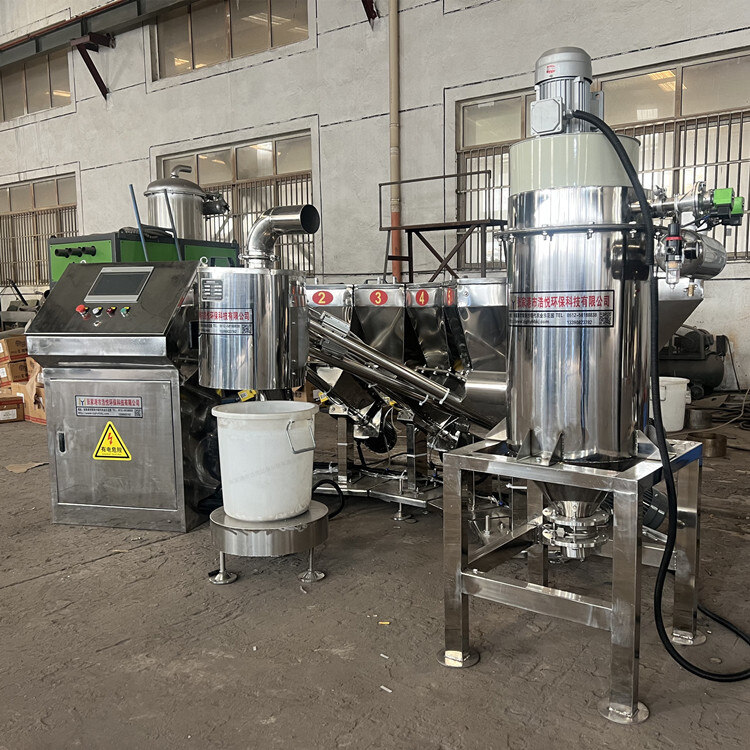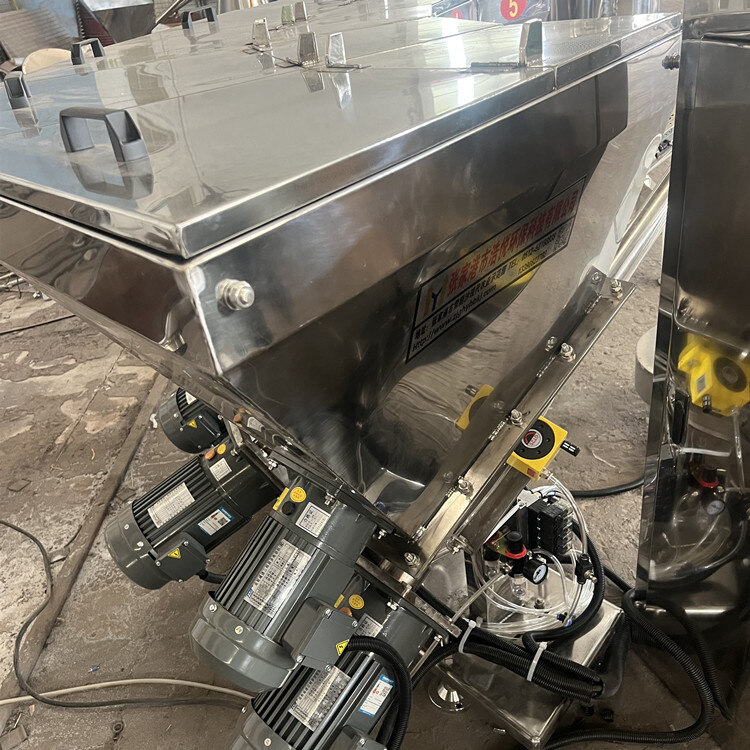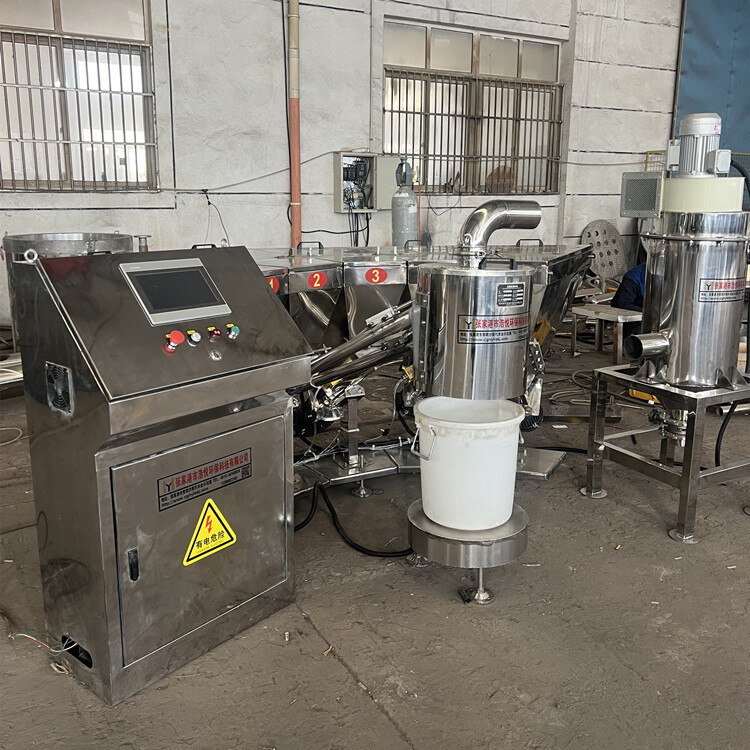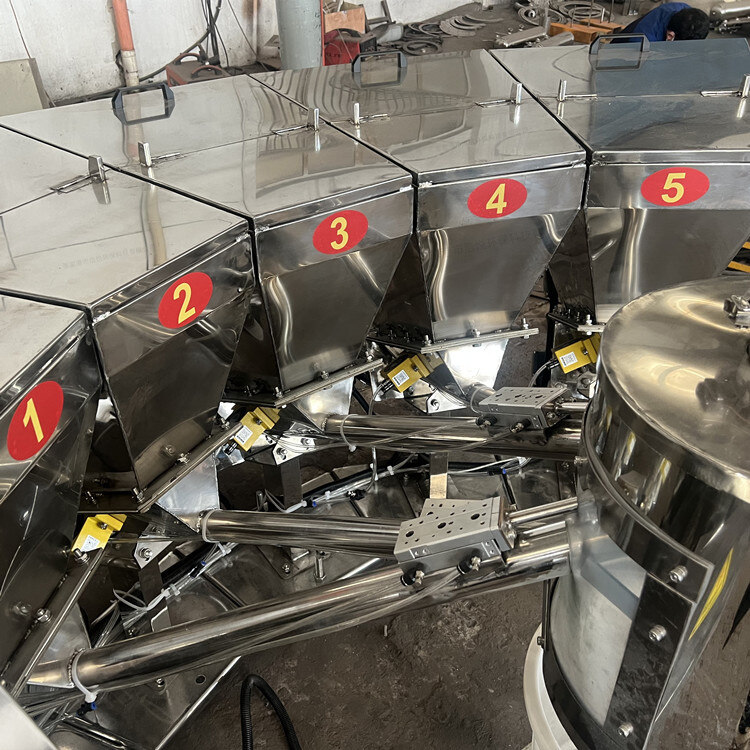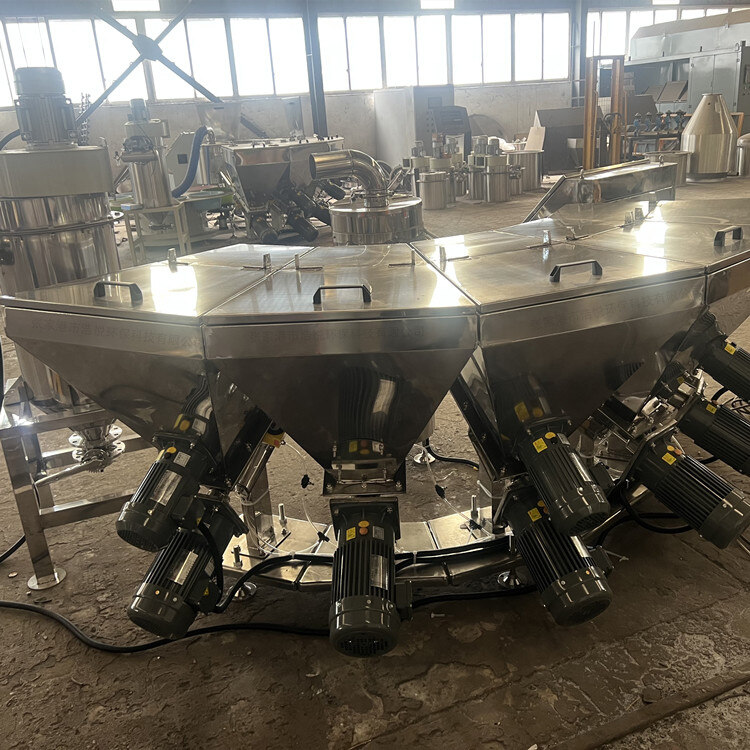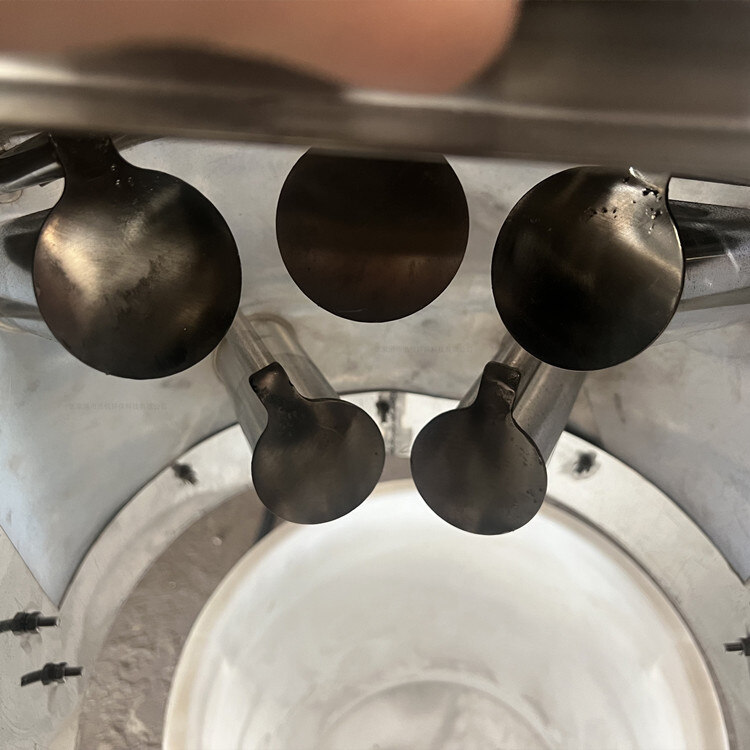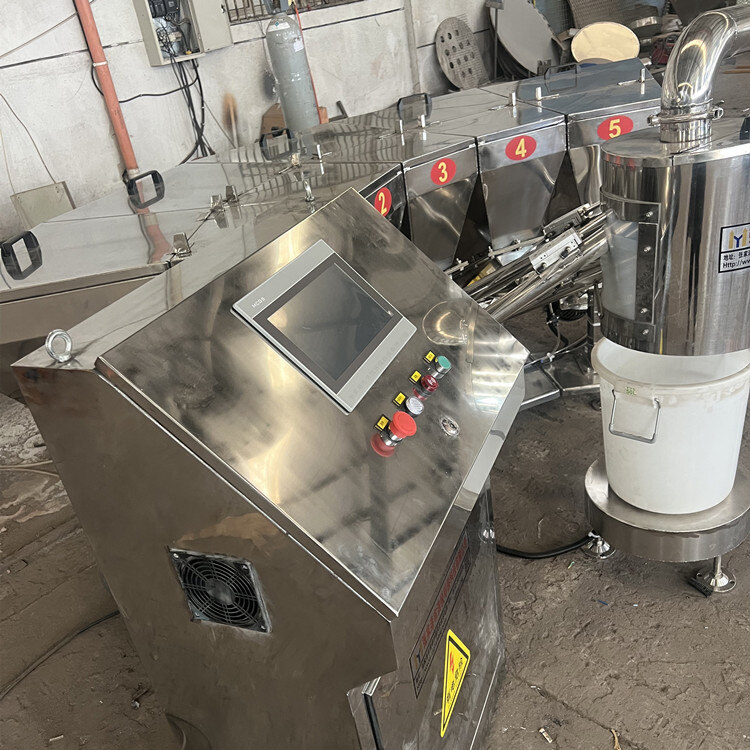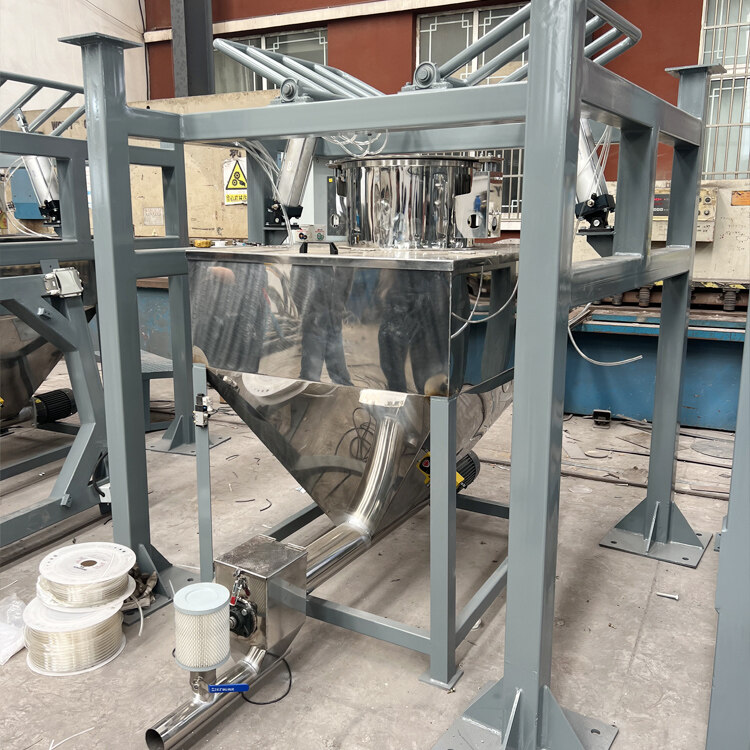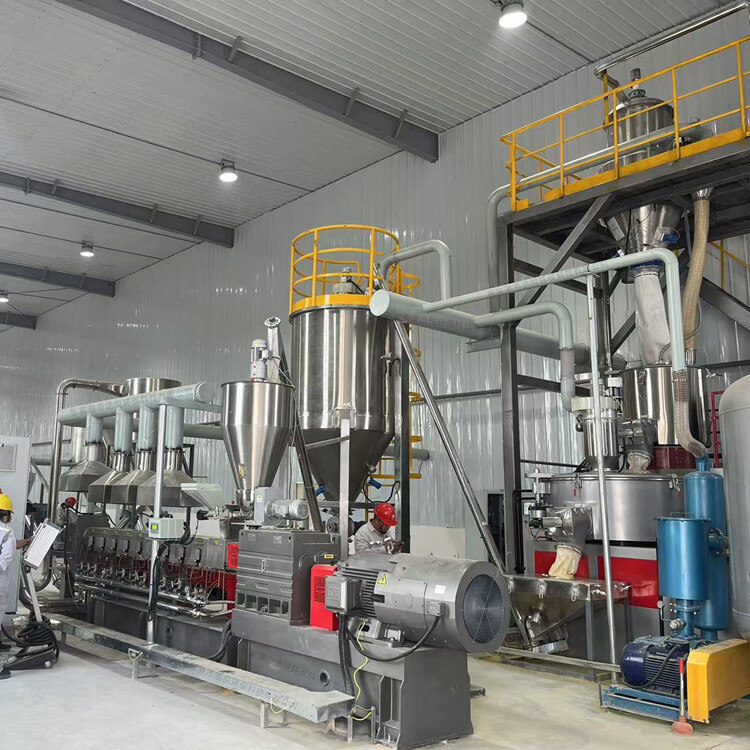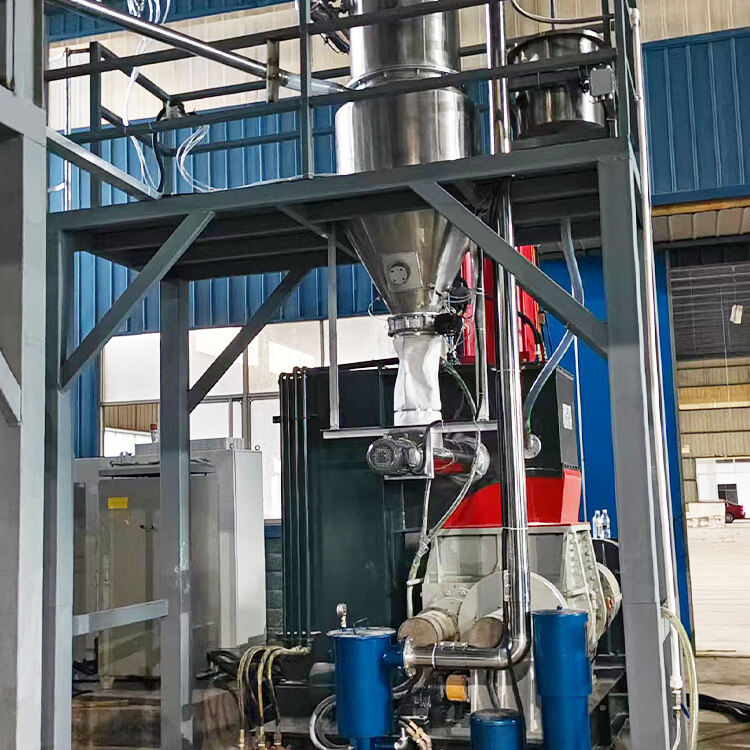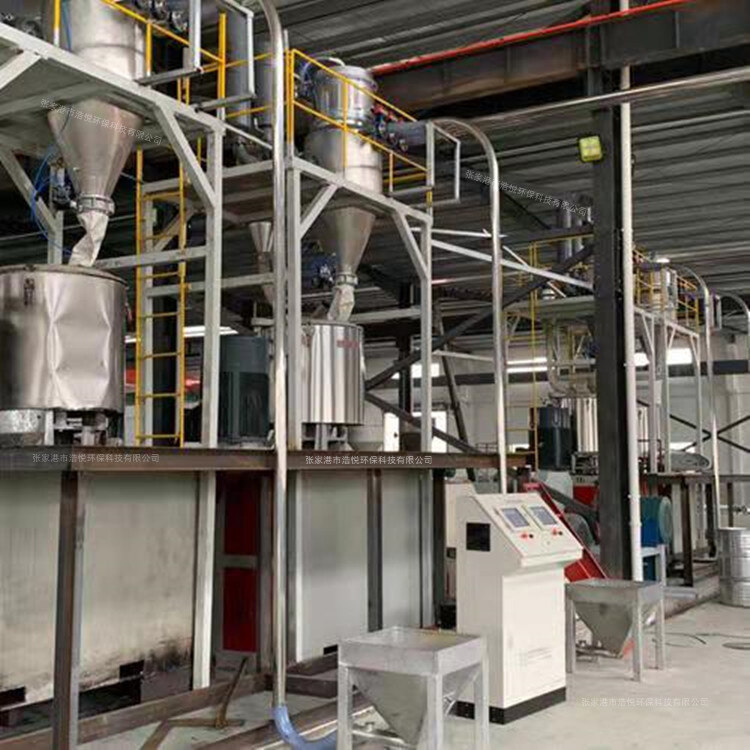- Introduction to automatic batching machine and fully automatic batching machine equipment
- The powder metering system tells you about the introduction of the mixing and drying machine
- 1000kg vacuum feeding machine
- Fully automatic small material batching system
- Research on Innovation of Automatic Weighing Machine Technology
- Design and operation of automatic batching system using PLC, industrial computer and frequency converter
Stainless steel food industry ingredient machine
- Category:Batching Plant
- Hits:134次
- Release Date:2025-06-23
- Share:
- Inquiry
- Details
1、 Core features: Integration of safety, precision, and efficiency
Food grade materials and hygiene design
The main structure of the ingredient machine in the stainless steel food industry is made of 304 or 316L stainless steel material, which has excellent corrosion resistance and can resist the erosion of acidic and alkaline components in food raw materials. At the same time, the surface is smooth and not easy to attach impurities, making it easy to clean and disinfect. The device is designed with no dead corners inside to prevent the growth of bacteria due to material residue; The parts that come into contact with materials (such as hoppers and conveying pipelines) are polished with mirror polishing technology, with a roughness Ra ≤ 0.8 μ m, in compliance with international food hygiene standards such as FDA and GMP. In addition, the equipment seals are made of food grade silicone material to eliminate the risk of harmful substance migration and ensure food production safety.
High precision measurement and flexible proportioning
This ingredient dispenser supports multiple measurement methods and achieves precise weighing for different forms of food raw materials. For granular materials such as grains and nuts, a weighing sensor is used with an accuracy of ± 0.1% - ± 0.3%; Powdered materials (such as flour and sugar powder) are precisely controlled for trace addition through a screw feeder combined with a high-precision weighing system; Liquid raw materials (such as juice and edible oil) are measured using flow meters or metering pumps, with an error controlled within ± 0.5%. The device can store hundreds of formulas, and operators can quickly switch between producing different products through a touch screen, meeting the production needs of the food industry for multiple varieties and small batches.
Automation and Intelligent Control
Equipped with PLC control system and industrial touch screen, achieving full process automation from batching, mixing to conveying. The system can preset the raw material ratio, weighing sequence, and conveying speed, monitor the data of each link in real time, and generate production reports for quality traceability. Some high-end models integrate AI algorithms, which can automatically adjust the feeding speed and measurement parameters based on material characteristics, avoiding errors caused by changes in raw material density; Simultaneously supporting integration with the factory MES system to achieve real-time uploading and remote monitoring of production data.
Dustproof and explosion-proof design
For materials such as flour and sugar powder that are prone to dust generation, the equipment adopts a fully enclosed structure and is equipped with a pulse type bag filter, which effectively adsorbs more than 99% of the dust and prevents the risk of dust explosion. In flammable and explosive environments (such as alcohol addition processes), the batching machine should use explosion-proof motors, explosion-proof control boxes, and be equipped with electrostatic grounding devices to ensure production safety.
2、 System composition: Collaborative work among various units
Storage unit
Composed of multiple stainless steel storage silos, the silo body is designed in a conical shape with a cone angle customized according to the material flowability (usually 45 ° -60 °). It is equipped with a vibrator or arch breaking device to prevent material clumping and blockage. Each silo is equipped with a level sensor (such as anti rotation or ultrasonic) at the top to monitor the material inventory in real time. When the material level is low, an automatic alarm is triggered and the replenishment process is initiated.
unit of measurement
Weighing module: High precision weighing sensors (such as German HBM brand) are used, combined with digital filtering algorithms to eliminate external interference and ensure stable weighing.
Feeding mechanism: Select different methods based on material characteristics, such as screw feeder (suitable for powdered materials), vibration feeder (suitable for granular materials), peristaltic pump (suitable for viscous liquids), and achieve two-step metering of "coarse feeding+fine feeding" through variable frequency speed regulation to improve accuracy.
Mixing Unit
Common types include double helix mixer, planetary mixer, etc. The stirring blades are made of stainless steel material and have a polished surface. The mixer is equipped with a heating/cooling jacket, which can control the mixing temperature and prevent heat sensitive raw materials (such as chocolate powder) from deteriorating; The mixing time and speed can be flexibly adjusted according to the formula to ensure a material mixing uniformity of over 99.5%.
transport unit
Using stainless steel screw conveyors, vacuum feeders, or pneumatic conveying pipelines, the prepared materials are transported to downstream equipment such as packaging machines and forming machines. The entire transportation process is sealed to avoid secondary pollution; Some devices support CIP (In Situ Cleaning) function, which automatically cleans pipelines through circulating cleaning agents, reducing manual maintenance costs.
control unit
Using PLC as the core, combined with industrial touch screens and sensor networks, to achieve equipment operation status monitoring, fault diagnosis, and alarm. The system supports hierarchical management of permissions, with personnel in different positions having different operational permissions to ensure the security of production data; Simultaneously equipped with data backup function to prevent formula loss.
3、 Application scenario: Covering the entire food industry chain
Baked Goods
In the production of bread and cookies, accurately weigh raw materials such as flour, sugar, butter, yeast, etc. to ensure the stability of the dough formula; The mixer thoroughly mixes the raw materials to enhance the taste and quality of the product.
snack food
Used as seasoning ingredients for potato chips and nut products, such as salt, chili powder, and spices, to achieve precise addition of small doses of additives and ensure consistent taste.
dairy products
In the production of milk powder, raw materials such as milk powder, vitamins, and minerals are mixed and proportioned; Accurately measuring probiotics, jam and other additives in the yogurt production line to meet different taste requirements.
condiment
In the production of soy sauce, vinegar, and sauces, various spices and additives are automatically mixed to improve production efficiency and product standardization.
4、 Development trend: moving towards smarter and greener
Intelligent upgrade: Introducing machine vision technology to real-time detect material color and particle size, and automatically adjust ingredient parameters; Implementing remote operation and maintenance of devices through 5G networks to reduce downtime.
Green and energy-saving: Optimize equipment structure, adopt low-energy motors and energy-saving control systems; Develop recyclable stainless steel materials to reduce resource waste.
Flexible production: Modular design enables equipment to quickly replace components, adapt to the production needs of different products, and meet the personalized consumption trend of the market.
Stainless steel food industry ingredient machines, with their safety, precision, and efficiency characteristics, have become key equipment for food enterprises to enhance their competitiveness. With the continuous advancement of technology, it will play a more important role in ensuring food safety and promoting high-quality development of the food industry in the future.


